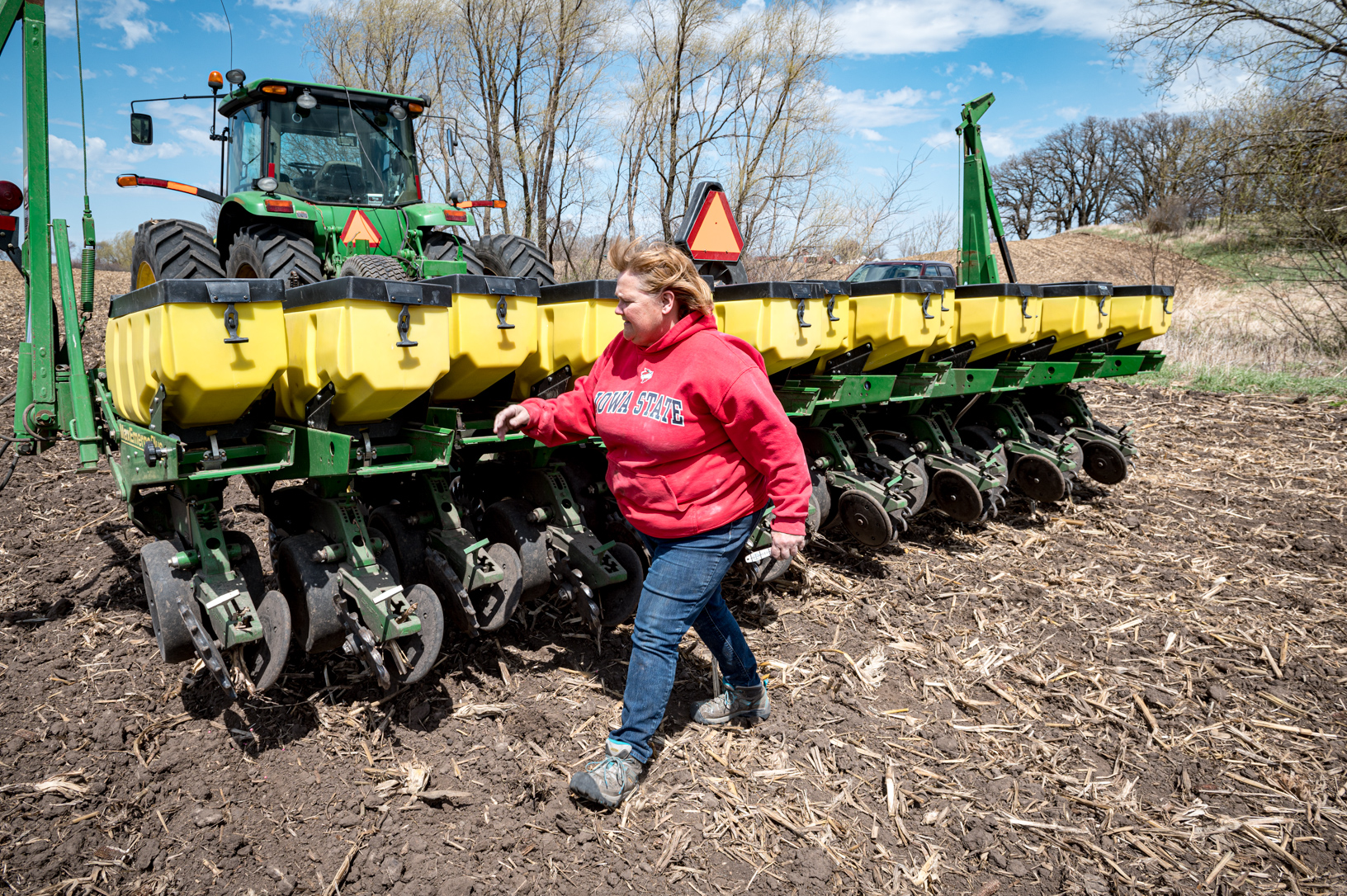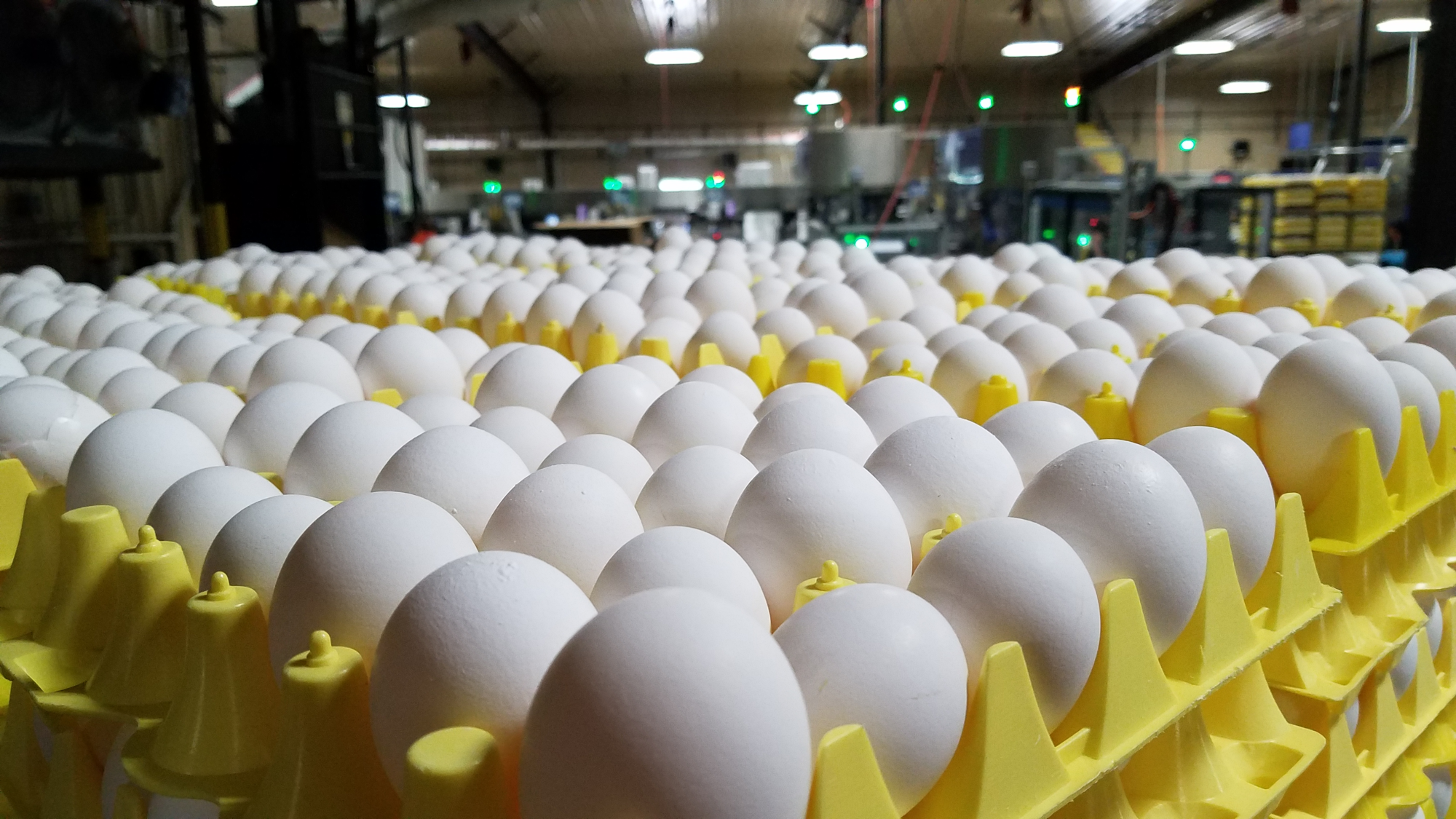By Lydia Zerby
We recently asked readers to “let us know one thing you would like to learn more about related to Iowa agriculture.” In the second installment of this series, discover more of their questions, including what types of machines farmers use, how farmers are working to keep groundwater clean and an overview of Iowa’s thriving egg industry. Find answers to these topics and learn how to submit your questions!
At Iowa FFP, we encourage two-way dialog and seek to share content that is relevant to what readers are currently interested in receiving. Throughout the coming months, we will share answers to actual questions submitted by our readers. Click here to submit your question, and we might answer it in a future edition! Of course, if you would like an immediate answer, you can always contact us.
Please note, by clicking the links below, you’ll be leaving a partially funded checkoff site.
Question: What are some different farming machines, and how do they work to grow and harvest crops?
Answer: Modern farmers use a wide range of equipment to help with various tasks and farm work. Depending on the size of the farm, different machines are available to suit the farmer’s needs. Here are some common types of farm equipment and the needs the equipment helps the farmer meet, though this is not an all-encompassing list.
Tractor – The name “tractor” is a broad term as there are several types for specific uses. The primary purpose of a tractor is to pull equipment, but attachments are also used to suit various farming needs. Attachment options range from sprayers, mowers, transplanters, rakes and cultivators.
Combine or Harvester – Grain farmers use combines to help harvest their crops. Combines have a complex mechanical system that turn crops into grain. This process includes three steps: cutting the plant, separating the edible parts from nonedible and separating chaff or debris from the grain. Newer combines can be very complex and may include GPS systems and other tools that help farmers track data to increase efficiencies.
Fertilizer Spreaders – These machines spray fertilizer across the field using an efficient and even method. Different spreaders are used based on the type of fertilizer and the needs of the soil. A few common types are the broadcast spreader and manure spreader.
Seeders – As you may guess, these machines help farmers spread seeds across a large amount of land quickly and efficiently. Seeders are often pulled by tractors. A few examples are broadcast seeders, used mainly for cover crops and grasses; planters, which cut into the ground and drop in individual seeds; and box drill seeders, which drill into the soil and drop seeds at specific depths.
Baler – A baler assists in hay, straw and corn stalk collection. The machine collects the materials and wraps them into manageable bales. The two main types of balers are round and square, which refer to the shape of the bale the machine creates with the compressed material.
Precision Ag Equipment – Precision agriculture is an approach to farm management that uses information technology (IT) to ensure crops and soil receive exactly what they need for optimum health and productivity. The goal of precision agriculture is to ensure profitability, sustainability, and protection of the environment. Precision ag utilizes specialized equipment and software–including satellites/GPS, drones, and field sensors–to access real-time data about the conditions of crops, soil, ambient air, area weather predictions, labor costs, equipment availability – even local traffic data. Predictive analytics software then uses that data to provide farmers with guidance about crop rotation, optimal planting times, harvesting times, soil management and more.
 Seeders are machines that help farmers spread seeds across a large amount of land quickly and efficiently.
Seeders are machines that help farmers spread seeds across a large amount of land quickly and efficiently.
Question: Can you tell me more about Iowa’s egg industry?
Answer: Iowa is No. 1 in egg production in the U.S.! According to the Iowa Egg Council, from September 2019 through August 2020, Iowa hens laid nearly 16 billion eggs. That means Iowa farmers are responsible for about 1 in 6 eggs consumed in the U.S. each year. With 6 grams of high-quality protein plus many essential nutrient in every oval, it’s a statistic we’re proud to celebrate!
America’s egg farmers feed their hens food that meets the birds’ daily nutrient requirements. The feed, which includes corn and soybean meal, is carefully balanced by a poultry nutrition specialist to combine the right amounts of protein, fat, carbohydrates, vitamins and minerals.
 Iowa is No. 1 in the nation in egg production.
Iowa is No. 1 in the nation in egg production.
Farmers offer Choice
Iowa egg farmers believe in consumer choice and work hard to provide you with the highest-quality variety of eggs, no matter what kind of eggs you choose.
Conventional – Eggs laid by hens living in cages with access to feed, water and security. The cages serve as nesting space. In this type of hen house, the birds are more readily protected from the elements, disease and predators.
Free-range – Eggs produced by hens that have access to the outdoors in accordance with weather, environmental or state laws. In addition to consuming a diet of grains, these hens may forage for wild plants and insects. They are provided floor space, nesting space and perches.
Cage-free – Cage-free systems vary and include barn-raised and free-range hens, both of which have shelter to help protect against predators. Both types are produced under common handling and care practices, which provide floor space, nest space and perches. Depending on the farm, these housing systems may or may not have an automated egg collection system.
Organic – Eggs produced according to national U.S. Department of Agriculture organic standards related to methods, practices, and substances used in producing and handling crops, livestock and processed agricultural products. Organic eggs are produced by hens fed rations with ingredients grown without most conventional pesticides, fungicides, herbicides or commercial fertilizers.
Enriched colony – Eggs laid by hens living in cages with access to feed, water and security. The cages serve as nesting space. In this type of hen house, the birds are more readily protected from the elements, disease and natural and unnatural predators.
Question: How are Iowa farmers working to keep groundwater clean?
Answer: Iowa farmers care about protecting our waterways and are implementing various conservation practices on their farms. Here are a few examples of the strategies being used across the state.
Cover Crops – Cover crops, such as winter rye, are planted in the fall before harvest or after row crops are harvested to help reduce the loss of nitrogen and phosphorus from the soil and capture nutrients for next year’s crop. Cover crops are a very important component of the Iowa Nutrient Reduction Strategy because of significant and immediate benefits for water quality across all landscapes. Cover crops are flexible, improve the soil resource over time and require a relatively low capital investment by farmers and prevent erosion.
Constructed Wetland – A shallow vegetated pool that helps filter nutrients, especially nitrate, and control flooding. In addition to removing nutrients, wetlands provide habitat, recharge groundwater, reduce flooding downstream by storing runoff and can provide recreational opportunities.
No-Till and Strip-Till – This is the process of leaving soil and crop residue undisturbed between harvest and planting, other than nutrient injection. No-till farming significantly reduces soil disturbance, which reduces soil erosion, builds soil organic matter, improves soil health and helps reduce phosphorus entering waterways. Strip-till farming is a modified form of no-till, where tillage is limited to a narrow zone in which next year’s crop will be planted. Like no-till farming, strip-tillage benefits include reduced soil erosion, increased soil organic matter and reduced phosphorus entering waterways.
Extended Crop Rotation – A planting cycle of different crops, such as grasses, legumes or small grains along with corn and soybeans to help improve soil health and decrease insect and disease pressure. The practice can help improve water quality by extending the number of months the soil is covered with actively growing plants. Economics have driven most producers toward row crop agriculture (corn-soybean rotations or continuous corn). An extended crop rotation that includes small grains and forages can help improve water quality and be economically competitive for producers.